Palermo’s Food and Culinary Delights: Street Food and Ancient Traditions
Palermo is not just a city of art and history; it is also a true paradise for food lovers. Its cuisine reflects its complex, multicultural history, influenced by centuries of foreign dominations, from which it absorbed and reinterpreted unique and unforgettable flavors. Nowhere else is food so integral to daily life as in Palermo, where the tradition of street food has evolved into an art form in its own right. This article will guide you through the main culinary delights of the city, with a focus on the stories and traditions that make these dishes so special.
Where and What to Eat
It’s really hard to go wrong in Palermo. Just avoid the usual tourist traps and seek something more “authentic.” There’s a long list of places and restaurants we recommend to our guests, but the best advice is to explore. The local cuisine offers Italian and Sicilian traditional dishes as well as a rich variety of foreign-inspired dishes, often reinvented with a local twist.
The ingredients are top quality, and the range of choices is too broad to cover. However, make sure not to miss the following dishes!
Palermo’s Street Food: A World of Authentic Flavors
Palermo is world-famous for its street food, a tradition that has deep roots in centuries past and remains a vital part of local culture. As you stroll through the historic markets like Ballarò Market, the Vucciria, or Capo Market, it’s impossible to resist the aromas and colors surrounding the stalls, where delicious dishes are prepared at all hours of the day.
1. Pane e Panelle
One of the most iconic dishes of Palermo’s street food is without a doubt pane e panelle. Panelle are chickpea fritters prepared following a recipe of Arabic origin. They are served hot inside a bun, often accompanied by crocchè (potato croquettes). This simple yet tasty dish is a symbol of Palermo’s popular cuisine, born from the ingenuity of making the most out of modest ingredients.
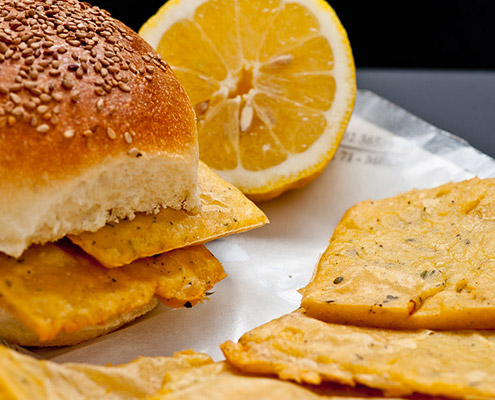
Pane and Panelle (Bread filled with “Panelle”)
2. Arancina
Another masterpiece of Palermo’s cuisine is the arancina (feminine in Palermo, unlike the rest of Sicily), a rice ball filled with ragù, breaded, and fried to perfection. There are variants with fillings like ham and cheese, butter, spinach, and many more. Historically associated with the feast of Santa Lucia on December 13th, when locals avoid eating bread and pasta, the arancina is now available year-round and beloved by locals and tourists alike.
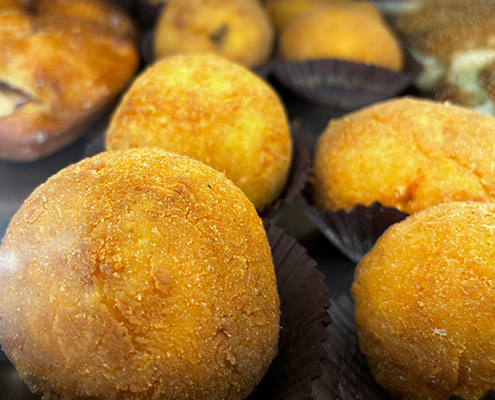
Arancine (plural of Arancina), are a typical street food in Palermo
3. Sfincione
Sfincione is another symbol of Palermo’s culinary tradition. It’s a thick focaccia topped with a rich mixture of tomato sauce, onions, anchovies, grated cheese, and breadcrumbs, all baked to soft, flavorful perfection. While typically eaten during the Christmas season, sfincione can be found year-round at fry shops and bakeries across the city.
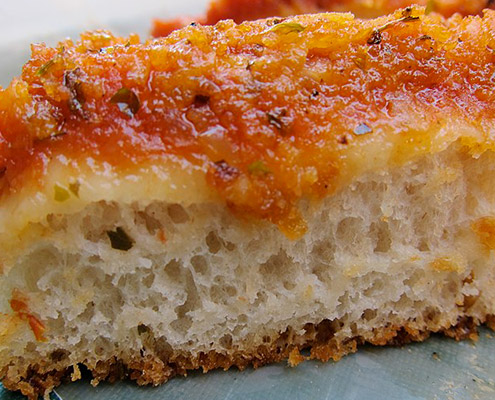
4. Pani câ Meusa
Perhaps the most representative dish of Palermo’s street food is pani câ meusa (spleen sandwich). This traditional sandwich is filled with boiled calf spleen, then fried in lard and seasoned with lemon and caciocavallo cheese. Pani câ meusa is a true institution in Palermo, prepared by “meusari” at street fry shops, especially in the markets. Its origins date back to the Middle Ages, when Palermo’s Jewish community, forbidden to consume or sell animal fat, invented this dish to make the best use of the less valuable parts of the calf.
Among other delicacies, you can try it at: “Nino u ballerino,” “Focacceria San Francesco,” “Pani ca Meusa Porta Carbone,” or “Rocky Basile” (Corso Vittorio Emanuele, at the entrance of the Vucciria market).
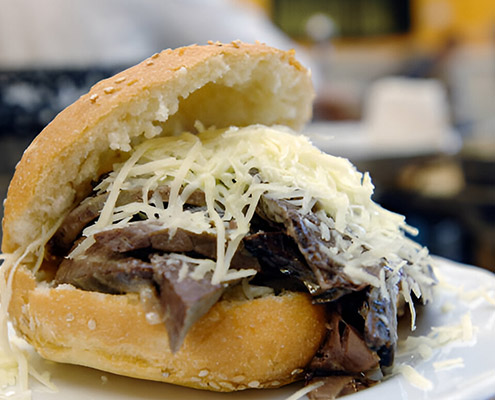
5. Stigghiola
Stigghiola is another street food specialty of Palermo, particularly appreciated by those who enjoy bold flavors. It consists of lamb or goat intestines, usually wrapped around themselves, seasoned with parsley and onion, and grilled over a fire. Stigghiola is one of many dishes that make good use of the less noble parts of the animal, a common practice in many traditional cuisines.
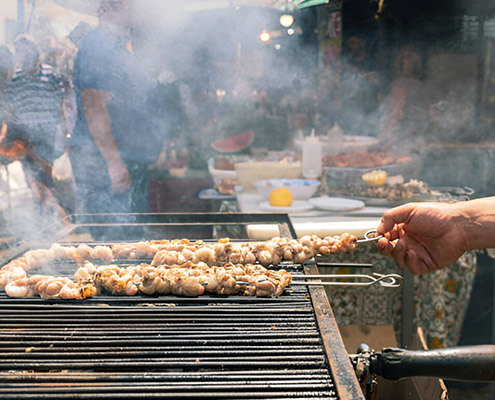
6. Rosticceria
All of Sicilian rosticceria deserves a mention. In reality, this term encompasses a variety of dishes, including arancine and sfincione. These are quick, delicious meals that you’ll find in various bars as you stroll down the main streets (Corso Vittorio, Via Roma, etc.). Typical items include calzoni (yeast dough filled with various ingredients) and ravazzate (similar to calzoni but filled with ragù and meat). They’re all excellent—try them for yourself!
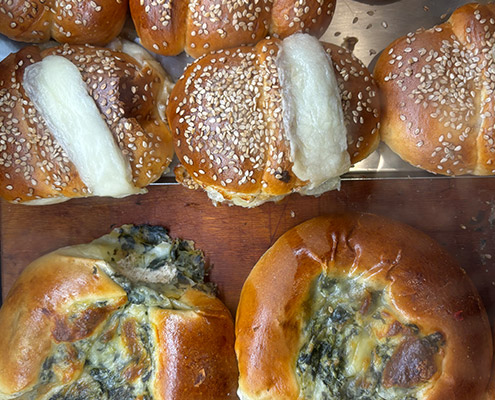
7. Gelato
Perhaps not technically street food, but let me tell you: artisanal gelato in Palermo is something special! You can’t go wrong with many places, but my favorites are “Gelateria La Kala” by the port, “Al Cassaro” on Corso Vittorio, and “Il Signor di Carbognano” on Via Ruggero Settimo.
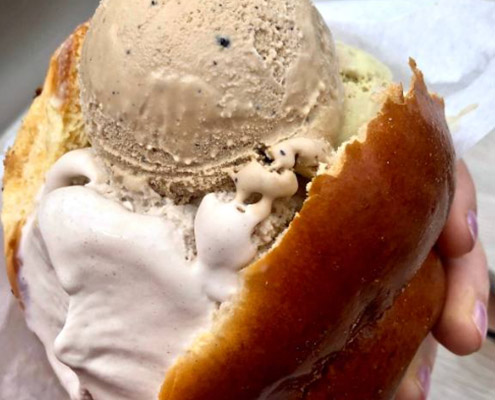
Palermo’s Traditional Dishes: A Fusion of Cultures
Beyond street food, Palermo boasts a rich cuisine of traditional dishes that reflect the influences of the various dominations that shaped the island.
1. Pasta con le Sarde
Pasta con le sarde is one of the iconic dishes of Sicilian cuisine, especially in Palermo. Made with fresh sardines, wild fennel, pine nuts, raisins, and saffron, this pasta embodies the flavors of Sicily in a single dish. The sardines, a humble yet flavorful fish, are complemented by the sweetness of the raisins and the aroma of fennel, creating a complex and delicious meal. This dish has Arabic origins, dating back to the Muslim domination of Sicily, and tells the story of the cultural blending that defines Palermo.
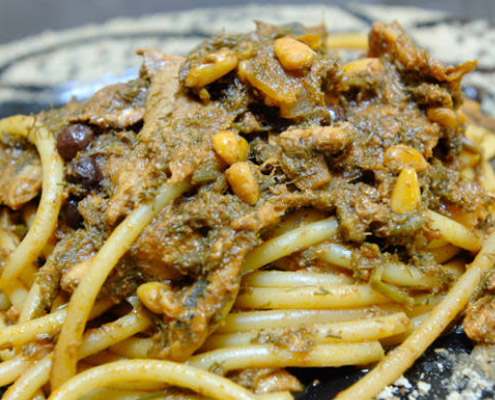
Pasta con le Sarde
2. Sarde a Beccafico
Sarde a beccafico is another sardine-based dish, where the fish are stuffed with a mixture of breadcrumbs, pine nuts, raisins, garlic, and parsley, then rolled up and baked with bay leaves and orange. The dish’s name comes from the “beccafichi,” small birds that were highly prized for their meat, hunted and cooked by Sicilian nobles. Sardines, being cheaper and more accessible, were the “poor” version of the dish, but over time, they became a true delicacy of Palermo’s cuisine.
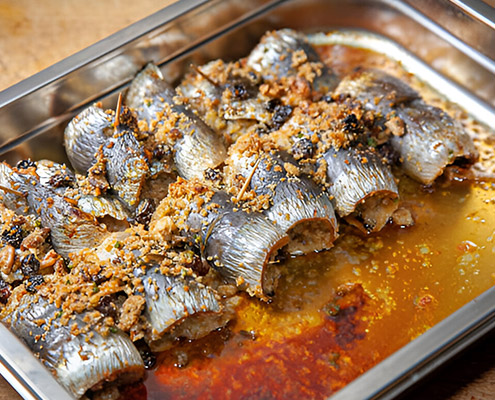
3. Caponata
Caponata is one of the most well-known and beloved side dishes in Sicilian cuisine. It’s a mixture of fried eggplant, peppers, tomatoes, onions, capers, olives, and celery, all seasoned with vinegar and sugar to achieve a sweet-and-sour flavor. This dish, which can be served hot or cold, has ancient origins and many local variations. Caponata perfectly represents the philosophy of Sicilian cooking: simple ingredients, carefully prepared, resulting in a rich, flavorful dish.
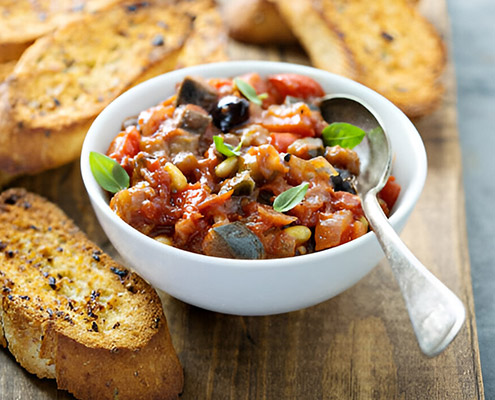
4. Pastry, Cassata and Cannoli
You can’t talk about Palermo without mentioning its pastries and its most famous sweets: cassata and cannoli. Cassata, made from ricotta, sponge cake, marzipan, and candied fruit, is the symbol of Sicilian pastry. Its recipe dates back to the Arab era when sugar and sweet ricotta were introduced to Sicily. Cannoli, crispy shells filled with sweet ricotta cream, are another dessert of Arab origin, originally made for Carnival but now available year-round.
For the best pastries, head to the Convent of the Nuns of Santa Caterina (near Piazza Pretoria). Beyond being a place steeped in history, their pastry shop offers unique delicacies prepared following ancient recipes. Of course, there are also many excellent local bars and pastry shops, but they are too many to list!
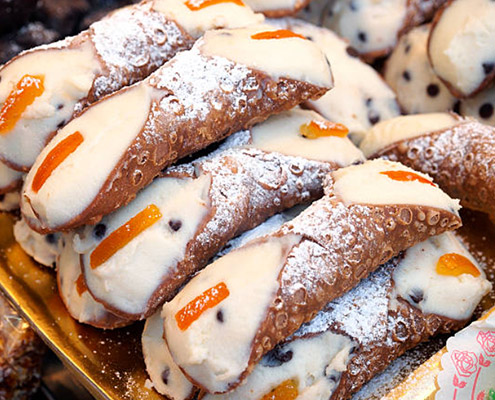
5. What Else? Too Many Typical Dishes…
there are so many typical dishes that it would be impossible to mention all of them here… plus there are many variants, and dishes borrowed from the more general italian cuisine. But I encourage you to explore! You will find a lot of options. Just to give an idea, many preparations involve meat or fish, typical cheeses, legumes and vegetables. This includes all kinds of pasta (swordfish based /sea urchins / Shrimps and stuff/ lasagne / baked “anelletti”/ broccoli cream / pistachio pesto / eggplant based “norma”, etc), but also Cous-Cous, Involtini (rolls of meat or fish or eggplant) and so on…
If you’re booking my apartment (Casa Cassarelli), I’ll give you a useful Custom Map where I list all the places I love and my personal recommendations (not only for food)!
Conclusion: A Journey to Savor
Visiting Palermo also means immersing yourself in its flavors, letting the aromas fill the streets, and discovering a world of delicacies that tell the story and culture of this unique city. From simple street food to more elaborate dishes, Palermo’s cuisine offers an authentic and unforgettable gastronomic experience that will delight every palate.
If you’re planning a trip to Palermo, don’t miss the chance to savor these treats, stroll through the historic markets, and sit down at the table to experience it all.

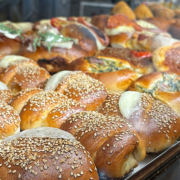 2024 visit-palermo.com
2024 visit-palermo.com